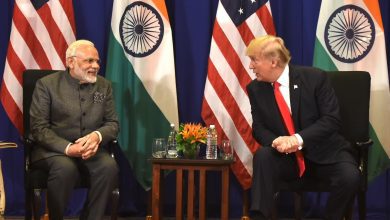Today, Indian vegetarians do not eat vegetables. They eat wheat, rice, dal, milk products, potatoes and sweets.

Today, Indian vegetarians do not eat vegetables. They eat wheat, rice, dal, milk products, potatoes and sweets.
Food historian and physician Manoshi Bhattacharya explains how the diet of Indians has changed over the centuries.You have studied 2,000 years of Indian diets. Do you see an intense political or public focus on food in the past?
Our ancestors largely followed the Mesolithic (8000-2700 BCE) concept of frugal meals, which included vegetables and meat. In India, the overall food intake was limited, with days of fasting interspersed. The demands on the plant and animal worlds were low. There were some aberrations though.
In 500 BCE when Jainism emerged, its followers became vegetarian. It was a choice of the rich and the elite who could eat frugally, while maintaining a plant diet. It was not popular. Today, the Jains are a minority community, despite the fact that most of them are recent converts to the faith.

Buddhism, too, saw something similar. The Buddha used to eat meat. Buddhists all over the world eat meat even today. But when Hiuen Tsang (a Chinese Buddhist monk and scholar) visited India in 630 CE, he was shocked to find that Indian Buddhists had turned vegetarian. They would eat lavishly in monasteries several times a day and drink rice starch throughout the day.
In 600 BCE, emperor Harshavardhana, who was ruling Haryana, tried to impose vegetarianism. He did not succeed. In the same period, Meghavahana, king of Gandhara (now Afghanistan), who ruled over Kashmir, also unsuccessfully tried to introduce vegetarianism.
How have trade and migration changed our dietary habits?
Wherever humans travel, they carry their food with them. They also eat new kinds of food, which over time gets assimilated into their diet. For example, some 80,000 years ago, people from Africa migrated and settled in India, and this had an influence on our cuisine.
Brinjal is native to India. When people from Mesopotamia in West Asia visited the Harappan civilisation in the Indus Valley, they could have eaten fried brinjal there, taken it back home, added curd, and it became what is now called the Iranian Bhurani Bengan.
Mesopotamians could have been introduced to rice by Harappans. Onions grew in Mesopotamia. The addition of onions to pulao to make biriyani could have happened in Harappa or Mesopotamia. These are connected lands that shared their recipes while maintaining their identities.
Did British colonial rule have any influence on our diet?
The British rule indirectly forced vegetarianism on the masses by raising taxes on meat and fish. They introduced the Forest Act of 1865 to take complete control over forests, common lands, rivers and seas. This forced the forest dwellers and tribal communities to look for work, and the British paid them in grains which was not a part of their diet.
Farm produce and animals were taxed heavily and became unaffordable. People could no longer offer meat to their gods during festivals, so they gave it up altogether.
In the 200 years of colonial rule, grains and wild plants surreptitiously became the staple food. Famines became endemic and led to the creation of a new cuisine, built on flavours to make up for the lack of nutrients. All the famous Indian cuisines we talk of today are the “famine cuisine”.
Today, 70 per cent of Indians eat meat, fish or eggs, but in less quantity or infrequently. This is an aberration of the past and shows we continue with our colonised mindset till date.
Our crops, especially after the Green Revolution, have lost most of their fibre content. The food has become tender and more flavourful, a change that is still underway.
The consumption of milk, the only animal produce that contains carbohydrates, has increased since the White Revolution. We also now consume meat of domesticated animals and it is fairly expensive.
Fat consumption was deliberately reduced through aggressive advertising in the 1900s. It populated the idea that fat is unhealthy and that the intake of plant produce is healthy.
Today, Indian vegetarians do not eat vegetables. They eat wheat, rice, dal, milk products, potatoes and sweets. They say no to bitter gourd, bottle gourd, brinjal or leafy vegetables. At most, they eat a little okra. They instead consume fructose-loaded fruits.
You have also looked at the link between diet, diabetes and historical data. What clues does the past provide?
India’s independence and the subsequent green and white revolutions caused an increase in diabetes in such a short time.
In Diabetes: The Biography, Robert Tattersall writes: “Much of the evidence that diabetes was a disease of the rich comes from India… The Indian experience suggested that mental work and excessive consumption of starches and sugars, aggravated by a completely sedentary life, were to blame. This was certainly true of the ‘Bengali Babu’ (a clerk who could write English), whose girth had a great tendency to increase in direct proportion to any increment to his pay.”
By contrast, diabetes was “almost unknown among Hindu widows, who lead a most unexciting life, and are not indulged in excess of saccharine or other farinaceous foods”, wrote physician CL Bose in 1907. This is why history is important.
You advocate moderate amounts of non-vegetarian food. Several others promote vegetarianism. How do you look at this debate?
Being a vegetarian is fine as long as one eats frugally. Indians, whoever practised vegetarianism, ate one meal a day. They also fasted for several days in a month and did not snack.
If we compare 100 grams (g) of raw dal with 100 g of raw meat, both have 20 g of protein. But 100 g of raw dal will have 46 g of carbohydrates, which turns into blood glucose and makes one diabetic. In contrast, 100 g of raw meat has zero carbohydrates. The increase of carbohydrate consumption has made India the diabetes capital of the world.
From a race of tall gracile people with healthy and long lives, as documented by travellers who have compared Indians with their own people, we have become short, diabetic, obese and have a shorter lifespan. At the same time, diabetes, heart ailments, Alzheimer’s disease and other metabolic syndromes have become common.
Dear users, this article was first published in Down To Earth’s print edition (dated 1-15 May, 2022), and has been posted here to keep you updated with such amazing articles.






